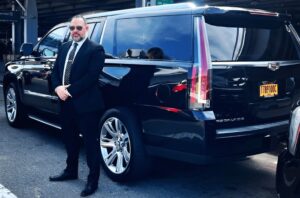
New York law allows victims of childhood sexual abuse to file civil lawsuits against the perpetrators of the crime. The statute of limitations for these lawsuits is September 1, 2019. Read on to learn about common causes of action and defendants in such cases. Then, contact an attorney to learn more. We’ll also examine common defendants and how to start your case. And, of course, you’ll want to learn as much about your case as possible before filing.
New York law allows victims of childhood sexual abuse to file civil lawsuits against perpetrators
The statute of limitations for bringing a child sexual abuse civil suit in New York has been extended to the age of 55. Previously, the statute of limitations was twenty-three years for a misdemeanor and low-level felonies. Under the new law, victims can now file a civil lawsuit against perpetrators until they are at least 28 years old.
The new law allows survivors to sue private and public institutions responsible for their abuse. This includes the Archdiocese of New York, Jehovah’s Witnesses, Rockefeller University, Boy Scouts, and religious organizations. Since child sexual abuse is often difficult to report, the law gives survivors an alternative avenue to pursue litigation. For many victims, pursuing justice can be therapeutic.
This legal avenue is unique among civil lawsuits, but it is worth considering. Because childhood sexual abuse victims are not able to file their lawsuits in time, it may take a while to heal. If they fail to file within the statute of limitations, their legal options will be gone. Despite being rare, it is possible to file a civil lawsuit against school districts and churches that failed to meet their legal obligations to protect children.
The statute of limitations for such cases extends to September 1, 2019
The new legislation will make it easier for victims of childhood sexual abuse to pursue a lawsuit. The new law closes a loophole relating to consent and expands the definition of sexual abuse. It also fortifies the penalties for abusers. As a result, victims will have a broader window to file a lawsuit, and it will be easier to hold institutions responsible for their actions.
The law also allows victims of childhood sexual abuse to pursue civil lawsuits against organizations that protected and enabled the abuse. Under previous drafts of the law, only the individual victim could bring a lawsuit. Thankfully, the governor addressed this loophole before the new law passed. However, the new statute of limitations for childhood sexual abuse lawsuits extends to September 1, 2019.
Common causes of action in a child sexual abuse case
There are many causes of action in a child sexual abuse case. Typically, abusers are found liable for assault or battery as well as intentional or negligent infliction of emotional distress. These causes of action also include third parties who may share responsibility. Victims should consult with a child sexual abuse attorney to determine which one may be appropriate for them. Fortunately, many cases are settled out of court, so this should not be a problem for victims.
In a child sexual abuse lawsuit, you can file against the perpetrator or third parties who failed to protect the child. These parties may include teachers, coaches, and institutions. If you cannot find a direct perpetrator, an institutional defendant may be appropriate. This option is particularly useful when a direct perpetrator cannot meet the standard of judgment required to be held liable. Regardless of who is liable, the goal of the lawsuit is to seek justice for the victim.
Common defendants in a child sexual abuse case
Defendants in a child sexual abuse case can include the parents of the accused, the alleged molester, or both. These defendants can face a variety of sanctions, from small monetary awards to millions of dollars. While every case is different, some general principles apply to all child sexual abuse cases. In addition to identifying the liable defendants, the lawyer will need to determine whether the accused molester committed the crime.
First, Defendant must provide clear and convincing evidence of another act of sexual abuse. This proof may be relevant if the acts were similar. In addition, the court will weigh the possibility of prejudice against the accuser, as well as privacy invasion. Evidence gathered from other sources may minimize the risk of prejudice against the child. Also, any additional information provided by the victim will impede the defense counsel from pursuing excessive cross-examination.







